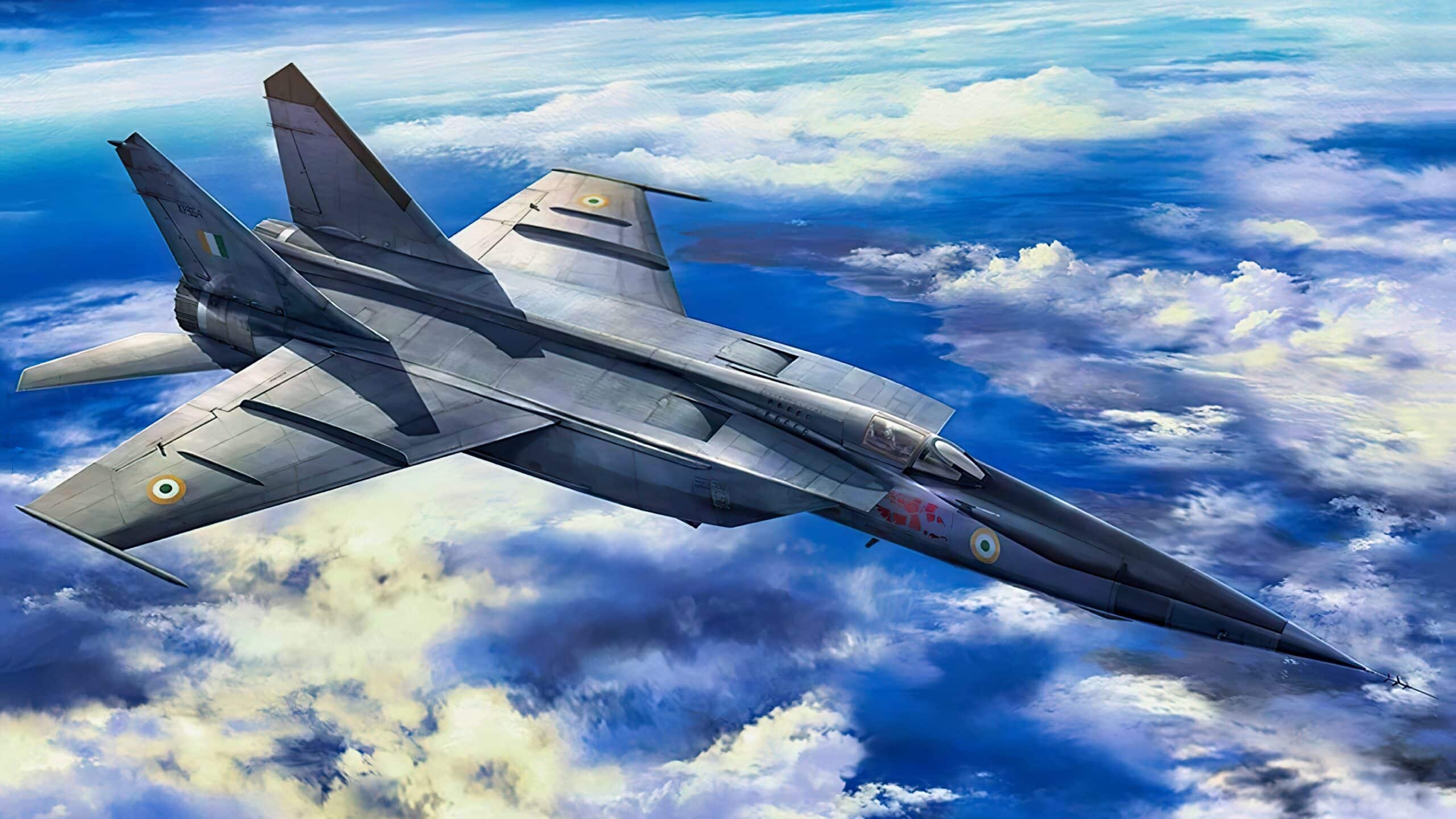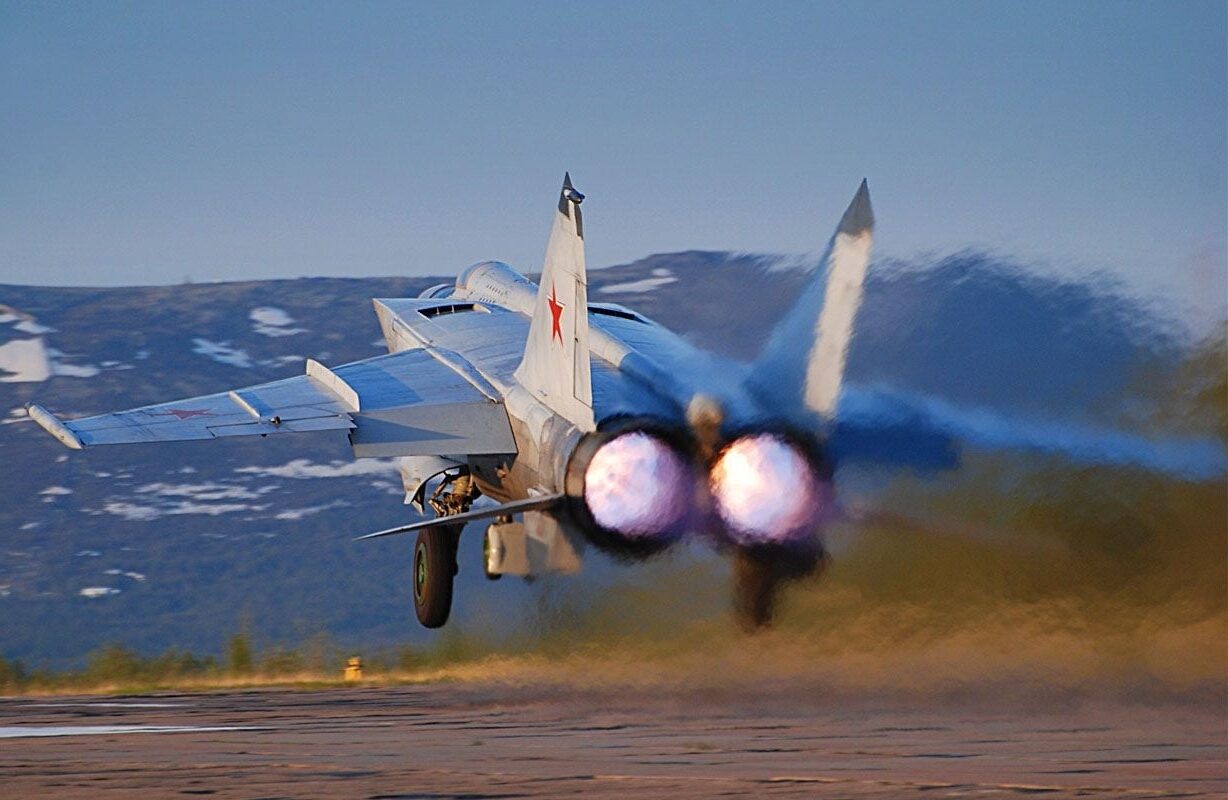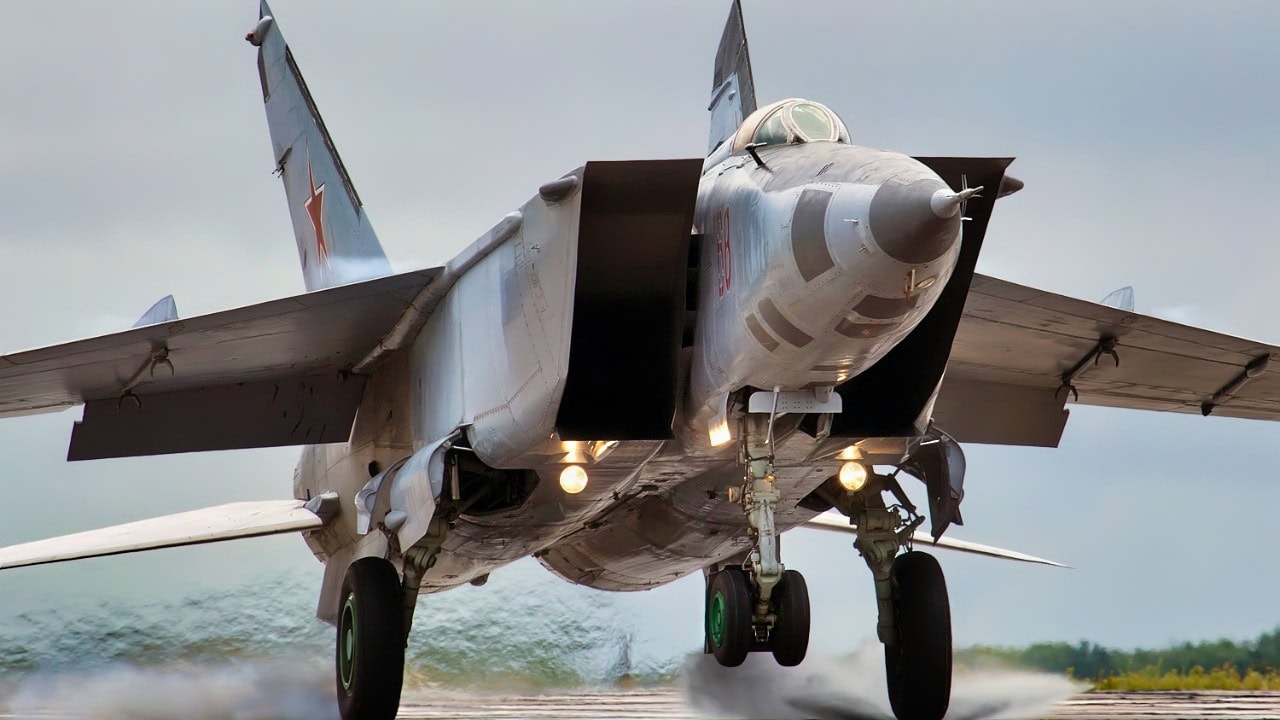The Foxbat: Anatomy of a Cold War Speed Demon
Introduction
The Mikoyan-Gurevich MiG-25, known to NATO as the “Foxbat,” is less an aircraft and more a Cold War legend forged in steel and secrecy.
When it first appeared in Western reconnaissance photos, its massive wings and powerful intakes sent a shockwave through the intelligence community, suggesting a Soviet super-fighter with unparalleled speed and agility.
This perception directly fueled the development of America’s premier air superiority fighter, the McDonnell Douglas F-15 Eagle.
The reality, however, was far more complex.
The MiG-25 was a product of a singular, almost brutalist design philosophy: a high-altitude, high-speed interceptor built for one purpose—to climb like a rocket and destroy incoming American strategic bombers before they could unleash their nuclear payloads on the Soviet homeland.
First flown in 1964 and entering service in 1970, the Foxbat was a marvel of focused engineering, sacrificing maneuverability, range, and low-altitude performance for raw speed and an astonishing operational ceiling.
Its mystique was shattered in 1976 when Soviet pilot Viktor Belenko defected to Japan, delivering the aircraft and its secrets to the West.
The analysis revealed a machine that was technologically crude yet brutally effective in its intended role. Built primarily of stainless steel and powered by colossal, fuel-guzzling engines, the Foxbat was a flawed masterpiece.
Its story is a fascinating case study in Cold War strategy, technological trade-offs, and the enduring power of a myth.
A Response to a Mach 3 Threat: The Genesis of the Foxbat
The MiG-25 was born from a specific and urgent fear that gripped Soviet military planners in the late 1950s: the advent of a new generation of American supersonic bombers.
The United States was fielding the Mach 2 B-58 Hustler and, more alarmingly, was deep into the development of the North American XB-70 Valkyrie, a strategic bomber designed to penetrate Soviet airspace at altitudes above 70,000 feet and at speeds exceeding Mach 3.
Existing Soviet interceptors were utterly incapable of countering such a threat.
This created a critical gap in the air defenses of the Protivovozdushnaya Oborony (PVO), the Soviet Union’s dedicated Air Defense Forces.
In response, the Mikoyan-Gurevich Design Bureau was tasked with creating a new interceptor that could meet this challenge head-on.
Formal approval for the project, designated Ye-155, was granted in the early 1960s, leading to two parallel prototypes: the Ye-155P for the interceptor role and the Ye-155R for high-altitude reconnaissance.
The design philosophy was one of extreme specialization. The aircraft had to be able to take off, climb to extreme altitudes, and accelerate to blistering speeds in the shortest possible time to intercept a bomber before it reached its release point.
This “point defense” mission profile meant that other characteristics, such as agility and combat endurance, were secondary. 10 The result was an aircraft designed not for dogfighting, but for a single, high-speed, rocket-like pass to engage its target.
Design and Technology: A Study in Pragmatic Power
When Viktor Belenko’s MiG-25P was disassembled by Western analysts in Japan, they were stunned by what they found.
Instead of the advanced titanium super-fighter they had feared, they discovered a machine built with a pragmatic, almost crude, focus on performance over finesse.
Airframe: Forged in Steel
The most striking feature of the MiG-25 was its construction. Approximately 80% of the airframe was made not of advanced alloys, but of arc-welded nickel-steel.
This was a practical solution to the immense thermal stress of sustained Mach 2.8+ flight, as the Soviet Union lacked the capacity to produce titanium in the quantities required.
This choice made the aircraft incredibly heavy, with an empty weight of around 20,000 kg (44,090 lbs), which in turn necessitated its enormous wings to generate sufficient lift.
The construction was functional rather than refined, with details like exposed rivet heads and visible hand-welding shocking Western engineers accustomed to more polished manufacturing.
Propulsion: The Thirsty Tumansky Engines
Powering the Foxbat were two colossal Tumansky R-15B-300 single-shaft afterburning turbojets.
These engines were marvels of raw power, each generating around 110 kN (24,700 lbf) of thrust with afterburner. They could propel the MiG-25 to a sustained speed of Mach 2.83.
Pushing the aircraft to its fabled top speed of Mach 3.2 was an emergency-only measure that was forbidden in routine operations, as it would cause the engines to overheat and effectively destroy themselves.
The price for this incredible performance was a voracious appetite for fuel. The R-15 engines were notoriously inefficient, especially at lower altitudes, earning the Foxbat a reputation as a “gas guzzler.”
This severely limited its combat radius to just a few hundred miles, reinforcing its role as a short-dash interceptor rather than a long-range patrol fighter.
Performance and Handling: A Straight-Line Specialist
The MiG-25’s performance envelope was a direct reflection of its design priorities. It was one of the fastest and highest-flying combat aircraft ever built, holding numerous world records for speed and altitude, including an absolute altitude record of 37,650 meters (123,523 feet) achieved in a zoom climb.
However, it was a poor performer in any other regime. Its heavy steel airframe was structurally limited to a modest 4.5 Gs, making it dangerously unmaneuverable in a dogfight against more agile Western fighters like the F-4 Phantom.
F-4 Phantom. Image Credit: Creative Commons.
At low altitudes, where the air was dense, the Foxbat was cumbersome and inefficient, with its wings and engines optimized for the thin air of the stratosphere.
Systems and Armament: A Powerful but Blunted Sword
The MiG-25’s combat systems were a microcosm of the aircraft itself: immensely powerful in some respects, yet critically flawed in others.
The Smerch-A Radar: Seeing High, But Not Low
The heart of the MiG-25P interceptor was its RP-25 Smerch-A radar, codenamed “Fox Fire” by NATO.
It was one of the most powerful airborne radars of its era, using antiquated but robust vacuum-tube electronics to generate so much energy it could “burn through” the electronic jamming of enemy bombers. 10 Its detection range against a bomber-sized target was up to 100 km.
However, the Smerch-A possessed a fatal flaw: it had no look-down/shoot-down capability.
The radar was unable to distinguish a low-flying aircraft from the background “clutter” of the ground, rendering it effectively blind to targets below its own altitude.
This was a catastrophic limitation, as by the time the MiG-25 entered service, NATO’s strategic doctrine was already shifting from high-altitude bombing runs to low-level penetration by bombers and cruise missiles, a threat the Foxbat was never designed to counter.
Armament: The R-40 “Acrid”
The Foxbat’s primary armament consisted of four massive R-40 (NATO: AA-6 “Acrid”) air-to-air missiles carried on underwing pylons.
These missiles, like the aircraft that carried them, were specialized for high-altitude interception.
They came in two versions: the radar-guided R-40R and the heat-seeking R-40T.
With a range of up to 80 km and carrying a huge 100 kg warhead, the R-40 was designed to destroy large, non-maneuvering targets like strategic bombers.
Against agile fighters, however, their effectiveness was limited.
A Foxbat for Every Mission: Variants
The robust and powerful MiG-25 airframe proved to be a versatile platform, leading to the development of numerous variants for different roles beyond pure interception.
- MiG-25P (Foxbat-A): The initial production interceptor, equipped with the Smerch-A radar.
- MiG-25PD (Foxbat-E): An upgraded version developed after the Belenko defection. It featured the new Saphir-25 pulse-doppler radar, which had a limited look-down capability, an under-nose Infrared Search and Track (IRST) sensor, and the ability to carry the more agile R-60 short-range missile.
- MiG-25PDS (Foxbat-E): A designation for original MiG-25P airframes that were upgraded to the PD standard.
- Reconnaissance & Strike Variants:
- MiG-25R (Foxbat-B): The initial high-altitude reconnaissance version, equipped with cameras and sensors.
- MiG-25RB (Foxbat-B/D): A series of reconnaissance-bomber variants that added a high-altitude bombing capability, using the “Peleng” navigation system for targeting.
- MiG-25RBK/RBS/RBSh (Foxbat-D): Specialized Electronic Intelligence (ELINT) and Side-Looking Airborne Radar (SLAR) platforms designed to map enemy radar installations.
- MiG-25BM (Foxbat-F): A dedicated Suppression of Enemy Air Defenses (SEAD) variant, designed to destroy enemy radar sites with up to four Kh-58 anti-radiation missiles.
- Trainer Variants
- MiG-25PU/RU (Foxbat-C): Two-seat conversion trainers for the interceptor and reconnaissance versions, respectively. They featured a distinctive new nose with a separate cockpit for the instructor placed in front of and below the student’s cockpit.
Operational History: A Fearsome but Flawed Record
The MiG-25’s combat legacy is as complex as its design. Its extreme performance made it a potent psychological weapon and a highly effective reconnaissance platform, but its limitations were exposed when pitted against modern Western fighters.
In the early 1970s, Soviet-piloted MiG-25R reconnaissance variants deployed to Egypt flew multiple sorties over Israeli-held Sinai. Flying at speeds and altitudes that Israeli F-4 Phantoms could not reach, they operated with complete impunity, demonstrating the platform’s value for intelligence gathering.
The Indian Air Force later used its MiG-25RBs to similar effect, conducting unchallenged reconnaissance flights deep into Pakistani airspace.
The Iran-Iraq War saw the Iraqi Air Force use its MiG-25s extensively for both interception and bombing missions. Iraqi Foxbats claimed several kills against Iranian aircraft, including F-4 and F-5 fighters.

MiG-25. Image Credit: Creative Commons.

MiG-25 Russian Fighter-Bomber. Image Credit: Creative Commons.
The 1991 Gulf War provided the Foxbat’s most high-profile test. On the first night of the war, an Iraqi MiG-25PD shot down a U.S. Navy F/A-18C Hornet, scoring one of the Iraqi Air Force’s few aerial victories of the conflict.
Later in the war, in what became known as the Samurra Air Battle, two Iraqi MiG-25s were vectored to engage two American F-15Cs. In the ensuing beyond-visual-range engagement, missiles were fired by both sides, but no aircraft were shot down.
The engagement was a tactical draw, but it proved that even a third-world air force could use the Foxbat to challenge the world’s most advanced air superiority fighter. 37 However, the Foxbat also suffered losses during the conflict, with several being shot down by U.S. Air Force F-15s.
In 1992, an Iraqi MiG-25 was shot down by a U.S. F-16, marking the first-ever air-to-air kill with the new AIM-120 AMRAAM missile.
|
Feature |
MiG-25PD “Foxbat-E” |
F-15C “Eagle” |
|
|
Primary Mission |
High-Altitude Interception |
Air Superiority |
|
|
Max Speed |
Mach 2.83 |
Mach 2.5 |
|
|
Service Ceiling |
~20,700 m (67,900 ft) |
~20,000 m (65,000 ft) |
|
|
Thrust/Weight Ratio |
~0.41 |
~1.03 |
|
|
Maneuverability |
4.5 G Limit |
9 G Limit |
|
|
Radar |
Saphir-25 (Pulse-Doppler) |
AN/APG-63 (Pulse-Doppler) |
|
|
Look-down/Shoot-down |
Limited |
Full |
|
|
Primary AAM |
4x R-40 “Acrid” |
4x AIM-7 Sparrow, 4x AIM-9 Sidewinder |
|
|
Gun |
None |
1x 20mm M61 Vulcan |
|
|
Table 1: A comparative analysis of the upgraded MiG-25PD and its primary Western rival, the F-15C Eagle. |
Conclusion: The Enduring Legacy of a Speed Demon
The MiG-25 Foxbat stands as a singular achievement in aviation history. It was the ultimate expression of a highly specialized design philosophy, created to counter a threat that never fully materialized.
Its existence terrified Western military planners, forcing the United States to develop the F-15 Eagle, an aircraft that would define air superiority for a generation.
The Belenko defection shattered the Foxbat’s myth, revealing a machine that was less a technological marvel and more a testament to Soviet pragmatism and brute-force engineering.
Its profound flaws—particularly its lack of look-down/shoot-down capability and poor maneuverability—were as extreme as its strengths. These very shortcomings, however, directly informed the design of its successor, the far more capable MiG-31 Foxhound, which rectified nearly all of the MiG-25’s weaknesses.

MiG-25 Foxbat. Image: Creative Commons.
With production ending in 1984 after 1,190 aircraft had been built, the Foxbat’s time as a front-line interceptor had passed.
Yet, it remains an icon of the Cold War, a symbol of an era when speed was king and the fear of a high-altitude nuclear bomber attack drove the creation of one of the fastest, most intimidating, and most deeply flawed combat aircraft ever to take to the skies.
About the Author: Harry J. Kazianis
Harry J. Kazianis (@Grecianformula) is a national security expert based in Orlando, Florida. Kazianis was Senior Director of National Security Affairs at the Center for the National Interest (CFTNI), a foreign policy think tank founded by Richard Nixon based in Washington, DC. He also served as Executive Editor of its publishing arm, The National Interest. Harry has over a decade of experience in think tanks and national security publishing. His ideas have been published in the NY Times, Washington Post, Wall Street Journal, CNN, and many other outlets worldwide. He has held positions at CSIS, the Heritage Foundation, the University of Nottingham, and several other institutions related to national security research and studies.



